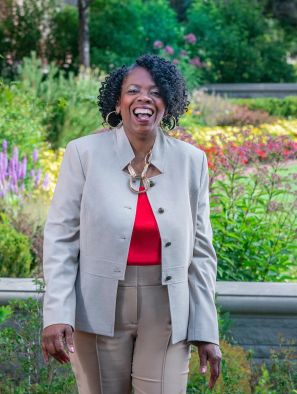Update on communications for November 2021
When a “fail fast” mantra is adopted, leaders “must ensure it is not at the expense of creative or critical thinking,” says Dan Pontefract in a 2018 Forbes article. “Time is our most precious resource. When ‘fail fast, fail often’ is invoked, it cannot become a culture where speed trumps the time we need to spend on creativity.”
This month’s communications update is about our first MarComm Lunch & Learn, as it boosted communication and collaboration regarding the pace of our work in MarComm and the ways we can support one another in our thinking and reflecting.
In MarComm, we are working towards balancing a “fail fast, fail often” approach with “slow looking,” which is the “practice of observing detail over time to move beyond a first impression and create a more immersive experience with a text, an idea, a piece of art, or any other kind of object. It’s a practice that clears a space...to hold and appreciate the richness of the world we live in,” says Emily Boudreau in Usable Knowledge.
Lunch & Learn All Hands Meeting
I’ve talked about ways to be more effective in meetings in a previous post. We are embarking on a new cadence for our MarComm All Hands meetings, the addition of a Lunch & Learn sequence aims to bring greater camaraderie as well as shared knowledge and even more intentionality to our work together. In our first occasion, we discussed Slow Looking, a concept out of Harvard, made famous by the way some museums instruct their tour guides to help visitors slowly engage with the artwork in the museum and further propelled by Shari Tishman's book on Slow Looking.
We challenged ourselves to slow down and carefully discuss a visual piece displayed on the screen. As we dove deeper, we saw more in the piece. Our discussion became more inquisitive and more connected. For some, opinions and feelings changed. Others became introspective, sharing why their unique lens of the world may shape their view of the piece. Our robust discussion allowed us to learn more about one another, share our creative views, and deepen our shared creativity and expression.
Writers for the University of Denver Magazine practice slow looking by periodically coming together to share, discuss, and dissect long- and short-form features. They contemplate by asking questions such as, “What makes this profile so compelling? This story so riveting? That prose so delightful to read?”
Active Listening & Exploring Complexities – Cornerstones to Communications
During our Lunch & Learn dialogue, active listening – a rare commodity among our seemingly endless Zoom meetings and tight deadlines – was abundantly present. In an April 2021 PRSA Strategies & Tactics article, PRSA contributor Celia Willis said, “...people are complex. They interpret messages and perceive change through the lens of their own personal experience and perspective. Putting people at the center of business requires that you understand them, which is why I believe a key to effective communications isn’t communication at all – it's listening.”
Echoing the sentiment about complexities and perspectives, Tishman says, “When people take the time to look slowly and closely at things, they come to discern multiple ways that things are complex.” She cites three main complexities: of parts and interactions (the physical intricacy or multiple features of things and the way those features interact); of perspective (how things look from different physical and conceptual vantage points); and of engagement (the interplay between the perceiver and the perceived).
Examining our work through these complex lenses and concentrating on intense listening will help us develop into better communicators and creators. As our division, like others, deepens our dive into matters of DEI, looking slowly and considering complexities is particularly paramount.
A Sense of Belonging Through Food and Dialogue
It was not by accident that our learning experience was held over lunch. Knowing that food fuels community connections, and that engagement is far easier on a full stomach, our team constructed the learning session as a potluck opportunity, inviting each team member to bring a dish.
While sharing good food and enjoyable conversation, we recognized the strong codependency between mutual trust, honest interpersonal communication, and shared joy – all of which result in a sense of belonging. Our intent is for our Lunch & Learn potluck engagements to continue to be critical interpersonal communication opportunities that, in addition to the learning, will foster a stronger sense of belonging across our entire division.
As we get immersed in the season of appreciation, I hope each of you will take a moment to slow down and appreciate the complexity and beauty of our world and one another.








